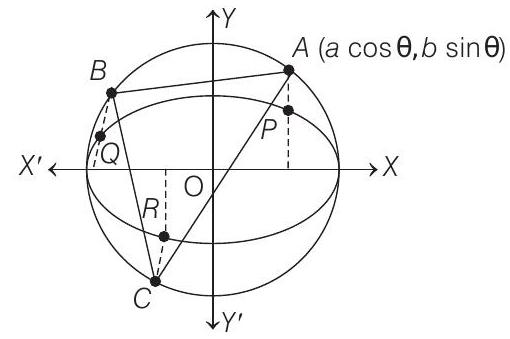Ellipse 2 Question 20
20. Let
Show Answer
Answer:
Correct Answer: 20. (d)
Solution:
- Let the coordinates of
and
According to the given condition, coordinates of

Equation of the normal to the ellipse at
or
Equation of normal to the ellipse at
Equation of normal to the ellipse at
But
and
and
Now, Eq. (iii) can be written as
448 Ellipse
For the lines (i), (ii) and (iv) to be concurrent, we must have the determinant
Thus, lines (i), (ii) and (iv) are concurrent.






